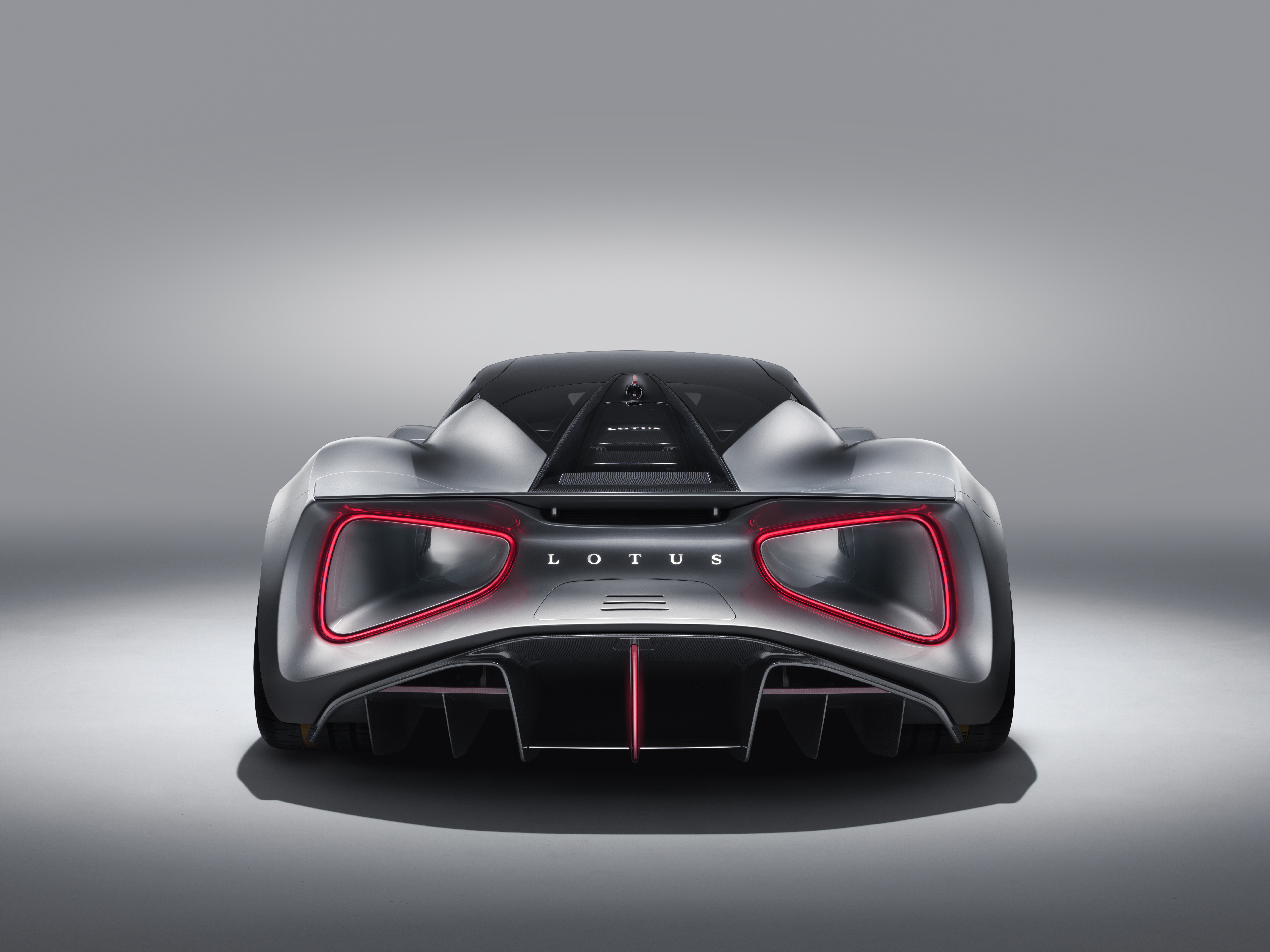Lotus debuted their new electric hypercar, named Evija (pronounced ‘E-vi-ya’), to the public yesterday in London. Not only is it Lotus’ first hypercar, but also the first all-electric British hypercar. Lotus is scheduled to begin production of the Evija in Hethel in 2020 with a limited production of “not more than 130 examples.” The number 130 is notably in tribute to the previous code name of “Type 130.”

With a Lotus, low weight is key, and this is one area where the Evija falls short compared to the typical Lotus. It is low weight for an electric car, with Lotus claiming it to be “the lightest pure-electric hypercar ever to go into series production” but still heavy for a Lotus at the slated weight of 3,703 lb (1,680 kg). Nimbleness is said to be aided by the use of torque vectoring on all four wheels.

To retain the feel of a traditional Lotus, they’ve worked towards achieving “pure steering feel” via an electro-hydraulic system with central weight distribution similar to a mid-engine car due to the battery packs being centrally mounted. The suspension will also have a motorsport connection, being inboard and produced by Multimatic.

And there should be no shortage of shove. Power specs seem to tower over a typical Lotus. Through their work with motorsport giant Williams Advanced Engineering (WAE), Lotus has given the Evija a powertrain that’s targeted to make 1,972 hp (2,000 PS) and 1,253 lb-ft (1,700 Nm) of torque. The centrally mounted battery packs feed power to all four wheels, each being spun by its own 500 hp e-motor. The brute force of this car will propel it from 0-100 kph/62 mph in under 3 seconds and reach a top speed over 200 mph.

Lotus says the design was inspired by nature and the aeronautics industry with a carbon body that’s stretched over the mechanical components. Russell Carr, Design Director was quoted as saying “The shape is inspired by the company’s prototype racing cars of the late Fifties and early Sixties.”

It’s quite a bit different from the 2010 design concepts that were unveiled when Lotus was under the leadership of Dany Bahar. It’s a bit more unique than that. It could be said that the 2010 concepts were a bit derivative of Lamborghini designs. The closest car I can see this resembling slightly is maybe the current Ford GT, but smaller and more sculpted than creased, more appearing to be figuratively stretched into shape rather than folded. The greenhouse rise as seen from the front 3/4 image seems a bit reminiscent of the cockpit of a fighter jet.

popped into my head on seeing this image.
“Lay down all thoughts, surrender to the void
It is shining, it is shining”
Lotus calls these Venturi tunnels, because air passes through them easing the car’s travel through air. But I like to call them “Venturi voids.” No matter what you call them, they’re a really cool detail in the design.



The interior seems sparse yet elegant, lots of honeycomb shapes throughout with a large selection of buttons in the center console. It’s all there at once, even things like what appears to be lifting of the nose and tail and what appears to be a camera icon.

It’s a beautiful car, but I’m also starting to see that a great car is like great video. It needs a great sound track to really sell the visuals. I’m sure this will take off at the blink of an eye, but it seems again like so often is the case that electric cars lack the drama and, well, the noise that really builds excitement. To be fair, with nearly 2000 hp on tap, there will be drama. I’m not even sure how you’d keep a tire together with those power levels, that weight and instant torque. Should be interesting to see how they make it all work together while keeping the owners from spinning into a wall. The total power level sounds otherworldly.
Being that this is an expensive car at a cost of roughly $2.1 million ($310,000 to secure a spot in line), out of the reach of most of us, perhaps this car could raise some capital for parent company Geely to produce something simplified with added lightness for the rest of us. Until then, this could make for a great poster car for a new generation of … well, it wouldn’t be petrol heads … electro heads?
All photos and video courtesy of Lotus Cars

